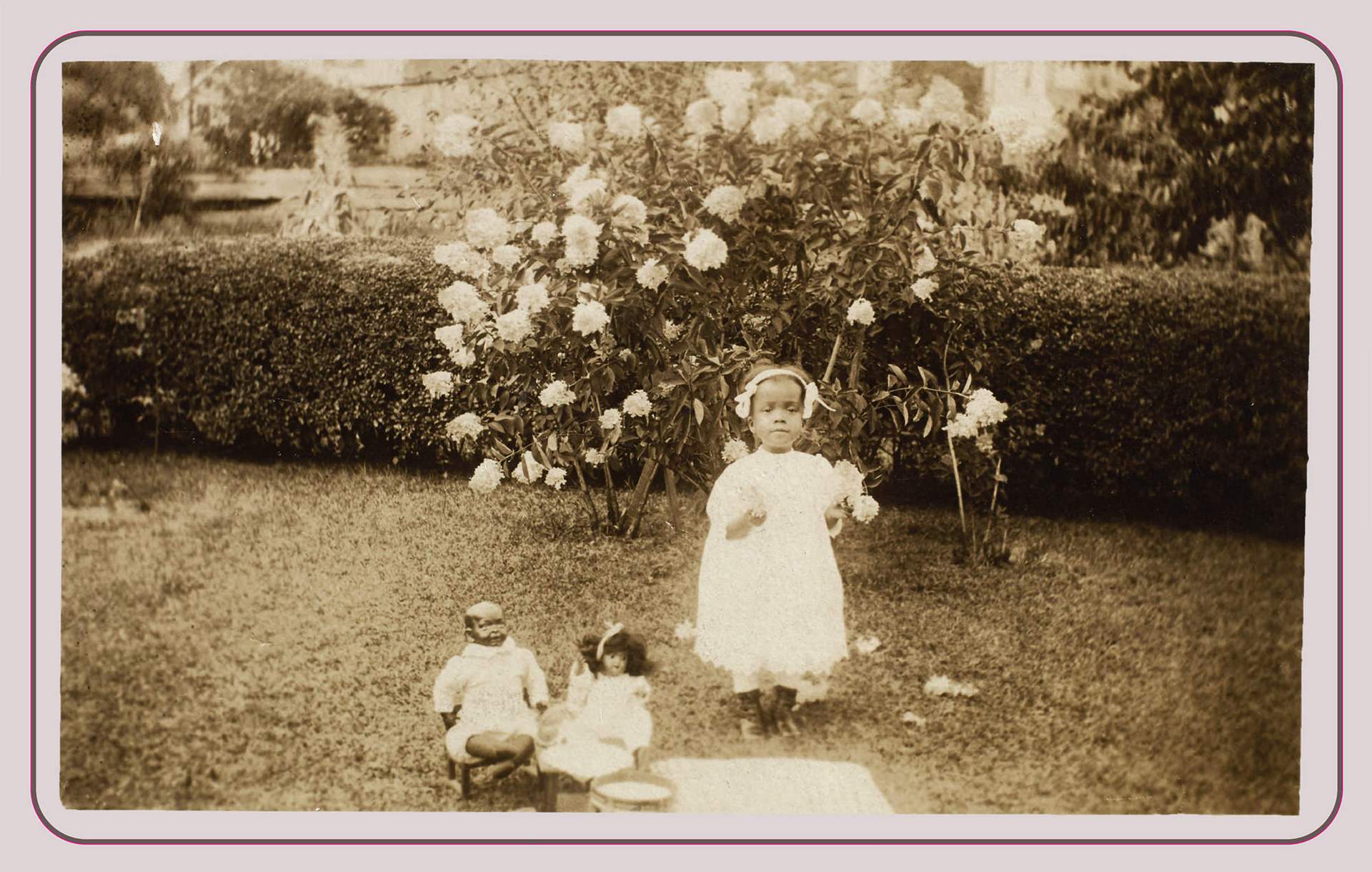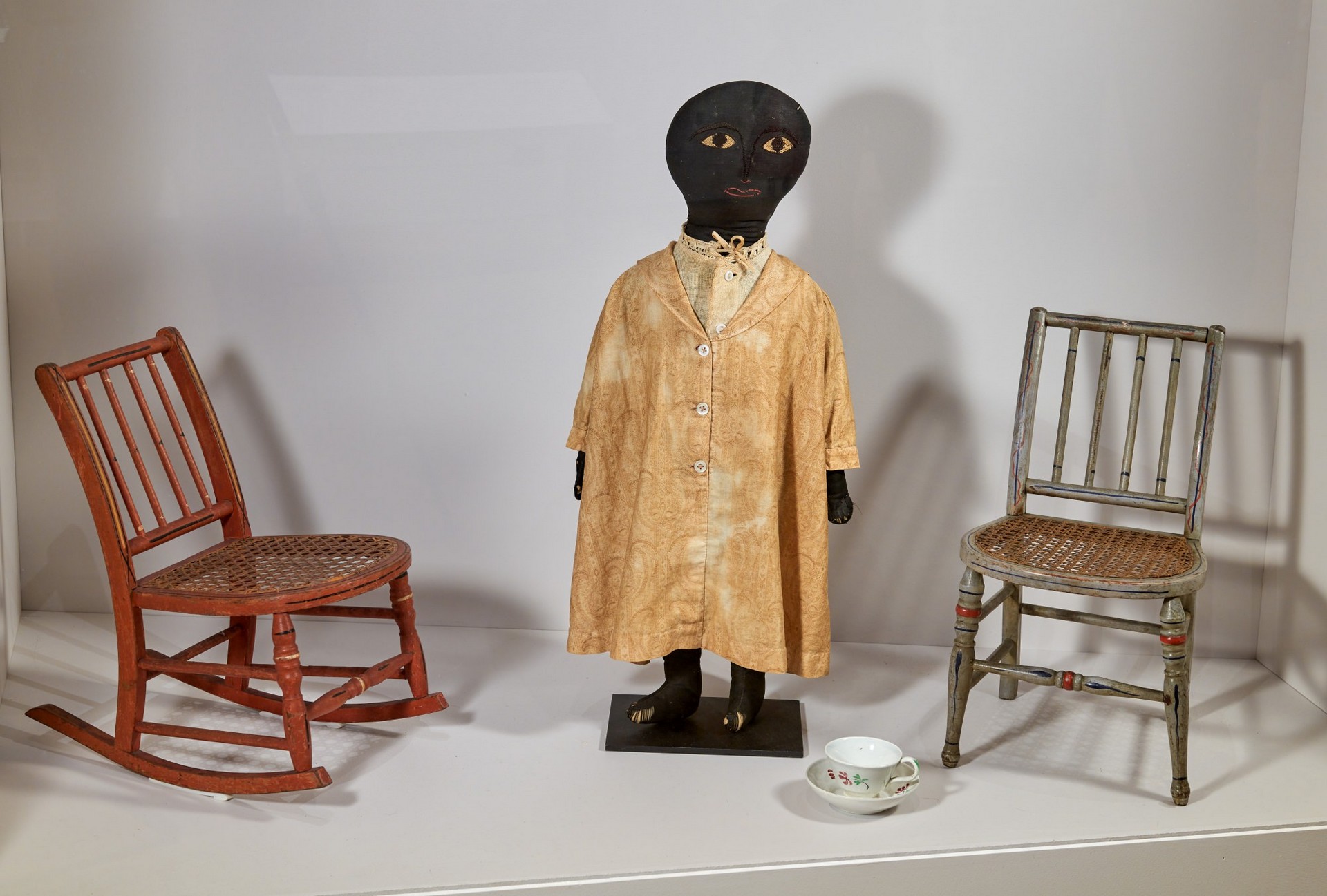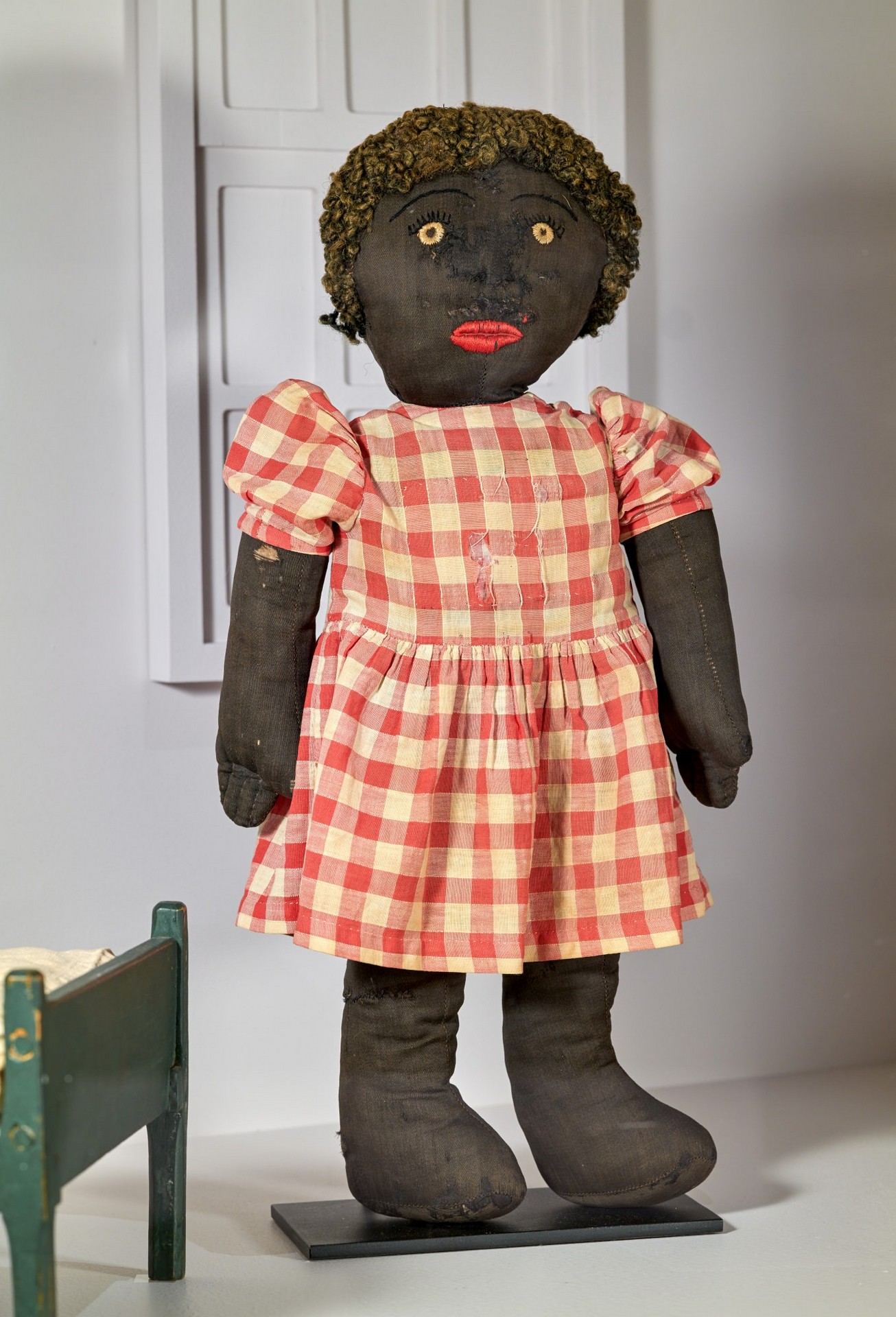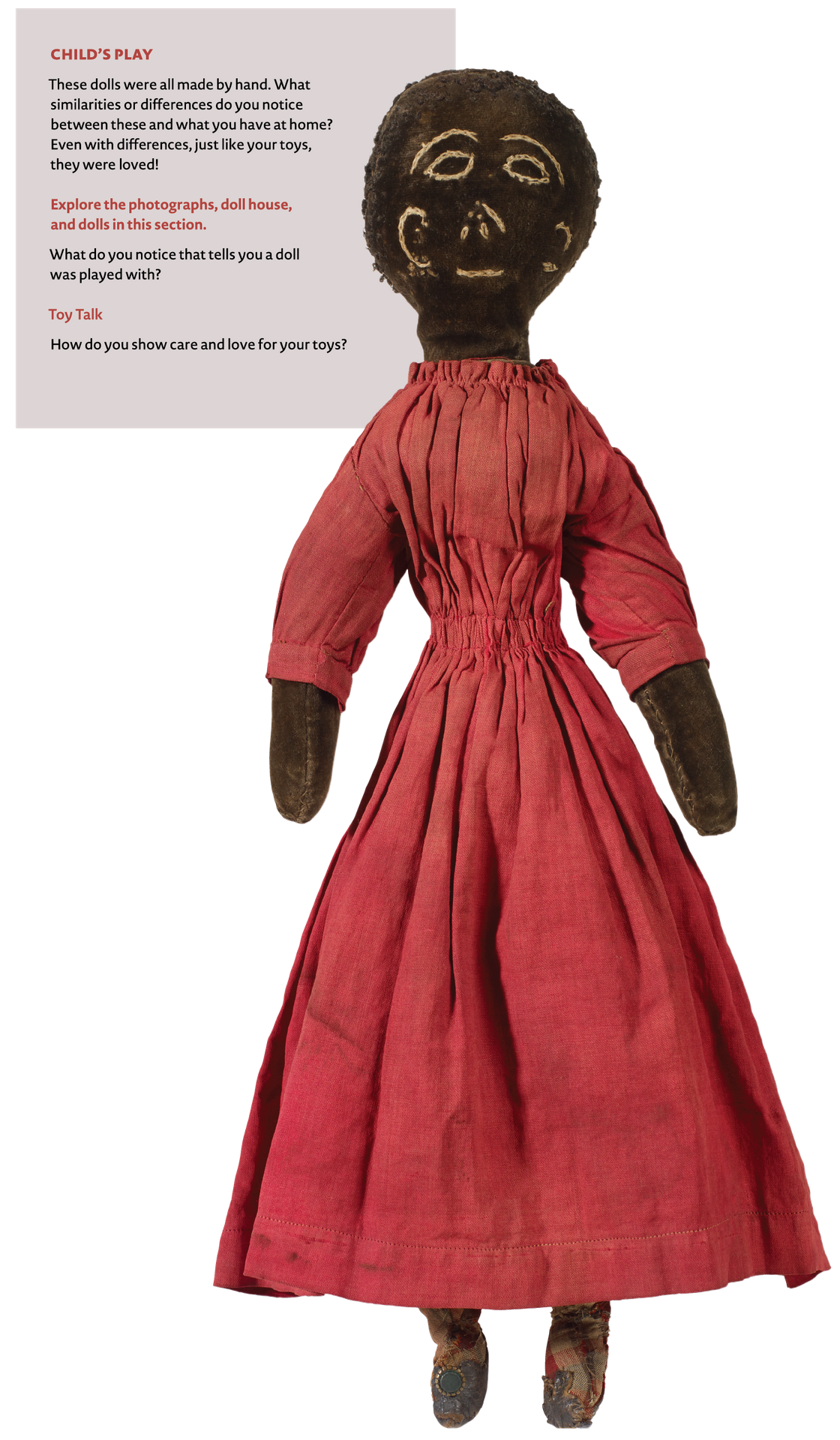




Dolls are a nearly universal feature of childhood.
Whether made from coarse sticks or fine porcelain, stuffed socks or fine
fabrics, dolls provide comfort, offer companionship, and fire the imagination.
In the 1800s,
ideas about childhood were changing. The dolls presented here encouraged the
kind of play that taught children nurturing and domestic skills in preparation
for adulthood. Their individualized
features invited affection rather than violent play.
Store-bought dolls—fragile and expensive—were
relatively rare until the mid-20th century. Soft cloth dolls, however, gave
children something that porcelain store-bought dolls could not—cuddly comfort,
which eased the anxiety of separation from parents. Black cloth dolls were
enjoyed by Black and white children alike. Their cross-race popularity raises
questions about the complex and often fraught relationship between white
children and their Black caregivers.
Ebenezer
Eames Finch (b. 1788)
Mary Ann Dorr (1834-1911),
1836
Oil
on canvas
Deborah
Neff Collection
Two-year-old Mary Ann Dorr, the daughter of a printer
and newspaper publisher from Augusta, Maine, clutches a Black doll outfitted in
a finely made dress whose neckline and sleeves echo her own.
It’s not clear why the artist decided to depict Mary
Ann with a Black doll. The Dorr family’s history has not yielded an
explanation. Might the toy have been a gift from a Black caregiver? Or could it
signal the family’s antislavery sympathies?
Doll with blue eyes, US, 1935
Mixed fabrics, cardboard, mohair, paint
Inscribed on torso: “[Brooke] 1935.”
This Black doll features unusual blue eyes.
Doll in red outfit, US, ca. 1915-25
Mixed fabrics, metal
This doll wears a romper—a loosely-fitting suit ideal
for playtime, first popular in the early 1900s.
Pair of dolls with corduroy knickers, possibly New
Hampshire,
ca. 1895-1915
Mixed fabrics, leather, animal fur, porcelain
Attired in corduroy britches and printed cotton
shirts, these schoolboys also sport mischievous grins.



Doll in white dress made by Mrs. C. Ettinger,
US, ca.
1920-30
Mixed fabrics including feed sack, paper
This doll has lost her hat, which would have
complemented her skillfully sewn dress and booties.
Doll with bonnet,
US, late 19th century
Mixed fabrics, leather
The maker cleverly repurposed children’s leather
gloves
to fashion the doll’s hands.
Doll in red dress, US, late 19th century
Mixed fabrics, animal fur, leather
This doll wears a modified child’s dress and manufactured
children’s shoes
Doll in pink dress, US, late 19th century
Mixed fabrics, leather
Sock doll, US, ca. 1950-70
Mixed fabrics
The maker ingeniously repurposed a man’s striped dress
sock for the torso and another sock for the head and arms. Stuffed with
quick-drying nylon stockings, the squishy doll was likely made for a baby.

Doll in paisley coat dress, US, 1900-25
Cotton

Doll in red dress, Southern US, ca. 1880-1920
Cotton
Doll with bells, possibly New Hampshire, ca. 1920-30
Mixed fabrics, metal
With bells stitched to its ears, hands, and feet, this
sock doll jingled happily when played with by its young owner.

Doll in red gingham dress, possibly Vermont,
ca. 1930-40
Mixed fabrics
Doll with red sash, probably Pennsylvania, ca. 1880-90
Mixed fabrics, animal fur, metal, leather, wood
This doll’s distinctive leather shoes with soles outlined in metal relate to patented shoes made for Confederate soldiers. They are also similar to clogs worn by children working in New England textile mills.
Doll with plaid dress, US, early 20th century
Mixed fabrics
This simple, well-loved doll was probably made and
dressed by a child.
Sock doll, US, late 19th/early 20th century
Mixed fabrics
Doll furniture, collection of the New-York Historical Society

Surviving photographs of children and their dolls from
the 1850s through the 1920s provide vivid context for the handmade Black dolls
in the exhibition. The photographs also complicate and frustrate any easy
understanding of who made, received, cherished, and played with these dolls.
Strikingly, the majority of extant photographs with handmade Black dolls show
them in the hands of white children, while images of Black children more often
than not depict them holding white dolls. In fact, surviving photographs of
Black children with Black dolls are quite rare.
The images depict children and dolls from Maine to
Georgia to Wisconsin. They invite us to consider the experience of childhood
during a period when the nation was divided by color lines and ponder how
children navigated their racial identity in the post-Civil War era.
These original photographs are just a small sampling
from the extensive collection of Deborah Neff.